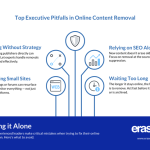Consumers expect seamless shopping experiences, whether in-store, online, or on their mobile devices. For CPG brands to thrive today, they must integrate all touchpoints into a unified strategy.
Omnichannel success goes beyond simply being present on multiple platforms. It means creating consistent experiences that meet customer needs wherever they shop.
From blending direct-to-consumer (DTC) efforts with retail strategies to leveraging data for smarter campaigns, every choice counts.
Stay tuned for actionable strategies and ideas tailored to elevate your brand's omnichannel approach.
Aligning Retail and Direct-to-Consumer Channels for Consistency
Consumers expect brands to provide a consistent experience across both retail shelves and online storefronts. CPG brands can align these channels by maintaining cohesive branding, unified pricing, and seamless promotions. For instance, offering click-and-collect options or syncing in-store inventory with e-commerce availability strengthens this connection.
A critical step is to ensure that both teams work from the same data sources. Partnerships matter too, so working with an agency that specializes in CPG growth can provide insights into bridging gaps between traditional retail operations and direct-to-consumer strategies. A unified approach helps deliver consistency while meeting customer expectations at every touchpoint.
Leveraging Marketplaces to Expand Reach and Drive Sales
Online marketplaces like Amazon, Walmart, and Instacart provide CPG brands with access to millions of shoppers daily. Selling on these platforms not only boosts visibility but also taps into existing consumer trust.
Success here depends on optimizing product listings with clear descriptions, competitive pricing, and engaging visuals. Brands should also consider investing in platform-specific advertising to maximize discoverability.
Balancing marketplace efforts alongside retail and DTC channels ensures comprehensive coverage without cannibalizing sales elsewhere. Proper inventory management across platforms avoids stock issues while maintaining a strong presence everywhere your customers shop, ensuring you stay top of mind.
Using Data Analytics to Understand Consumer Behavior Across Platforms
Data is the backbone of successful business decisions. Tracking consumer behavior across retail, DTC, and marketplace channels reveals buying patterns and preferences. This insight enables brands to tailor their messaging, promotions, and product assortments to specific audiences.
Investing in analytics tools or platforms that unify data streams ensures you have a complete picture of customer journeys. For example, tracking how in-store shoppers respond to digital ads helps refine future campaigns.
Collaborating with partners who provide detailed performance metrics can further optimize your efforts. Data-driven decisions keep your brand relevant while delivering experiences customers genuinely value.
Optimizing Creative and Media for Seamless Brand Experiences
Consistency in creative and media builds trust across platforms. From packaging design to online ads, every element should reflect your brand's identity. Tailor visuals and messaging for each channel while keeping a unified tone.
For example, social media content might highlight convenience to stand out in this $95 billion market, while retail displays emphasize product benefits. Ensure campaigns align with platform-specific best practices while maintaining the brand essence.
Tools like dynamic ad platforms help personalize messaging based on audience data. Regularly reviewing performance ensures adjustments improve results over time. A seamless creative approach strengthens recognition, keeps consumers engaged, and fosters loyalty regardless of where they interact with your brand.
Strategies for Building Loyalty Through Unified Customer Engagement
Loyal customers are 14 times more likely to drive repeat sales than newcomers, and also provide brand advocacy. A strong omnichannel strategy creates touchpoints that foster meaningful connections. Personalized offers, such as loyalty discounts or rewards programs accessible across channels, make a big difference.
For example, integrating an app with in-store purchases lets customers track rewards seamlessly. Email campaigns tied to online behavior keep your brand relevant while enhancing engagement.
Focus on two-way communication by responding to reviews and inquiries promptly, whether online or offline. Delivering consistent experiences demonstrates that you value your customers everywhere they interact with your brand, fostering long-term loyalty in a competitive marketplace.
Wrapping Up
An effective omnichannel strategy isn’t about being everywhere. Instead, it’s about creating consistent, connected experiences that meet customer needs seamlessly. CPG brands can thrive by aligning channels, leveraging data, and maintaining brand cohesion.
By implementing these practical strategies, you not only drive growth but also build stronger relationships with customers who return again and again.














